Intro
You may have guessed by the title of this blog that I have a thing for salt. Resting on a little ledge in the kitchen, always within arms reach, are at least three different salt varieties. In the inside pocket of my purse I carry with me a small container that contains a modest amount of both Fleur de Sel and Maldon. In our kitchen salt is the most frequently used ingredient, which is why I’m surprised that it took us until now to make some ourselves.
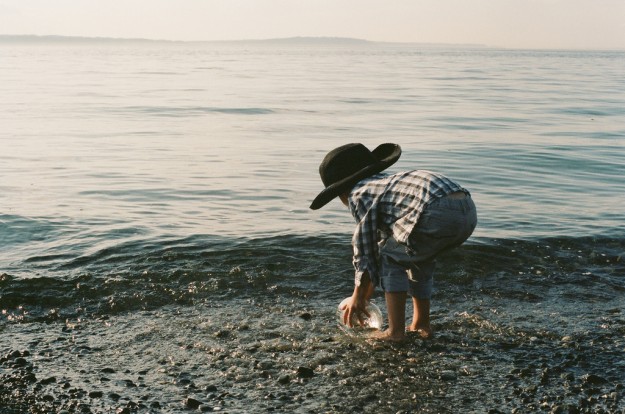
We grabbed the largest containers we could find, (at our house those just happened to be two growlers) and headed to one of our favorite local beaches. Carrying the growlers down to the beach, we ignored the odd looks from the fellow beach goers that were shot in our direction. Eager to gather our ingredient we headed straight to the water stopping only to catch our breath as the cold bite of the pacific caused a temporary stall in the process.
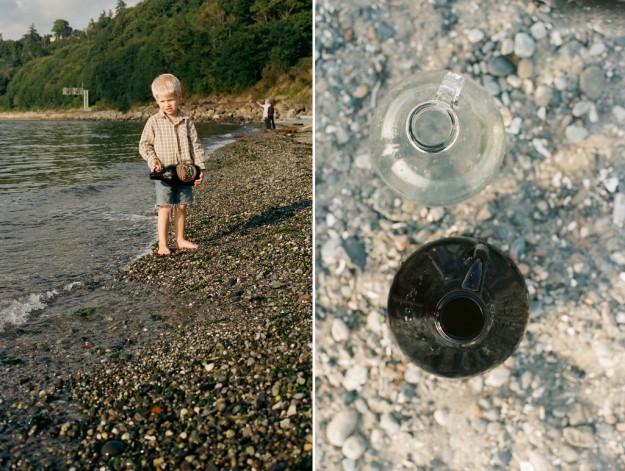
Soon enough we had the containers filled and we continued our time on the beach searching for shells, skipping rocks and watching the kite surfers rush past us as they soared through the water.
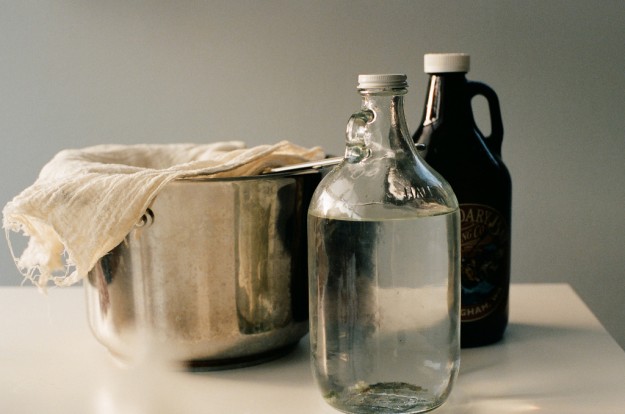
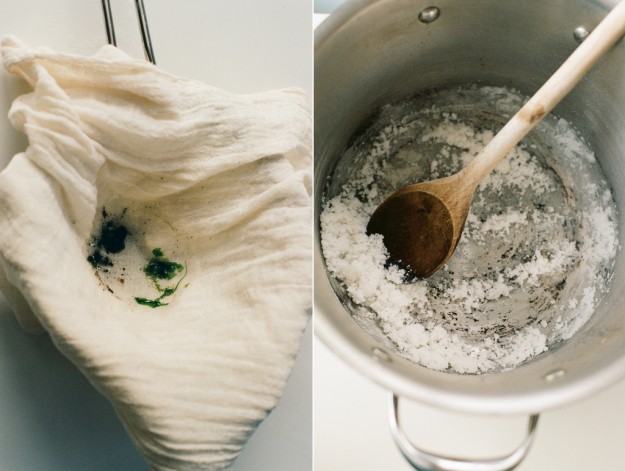
When we arrived home I passed the beach water through several layers of cheese cloth (four, at least) to capture the bits of sand, rogue sea shells and kelp that came with our catch. The water that was left in the pot was perfectly clear.
With the sea water set somewhere between a simmer and a boil it took nearly four hours for us to reach salt. Every so often we would check the process then return to our daily tasks while we continued to wait for the water to vanish and leave behind a finely grained salt that manages to capture the best of sea.
By the time we had salt the boys had gone to bed. My excitement caused rash thinking as for a moment I contemplated waking them to show the end result. Reason took over and I waited until morning to share with them the fruit of our labor.
We ended up with about 1/2 cup of salt after boiling down 2 gallons of ocean. Not a lot considering the time invested in the process but it remains to be well worth it. It has given us even more reason to return to the beach often and there is nothing wrong with that.
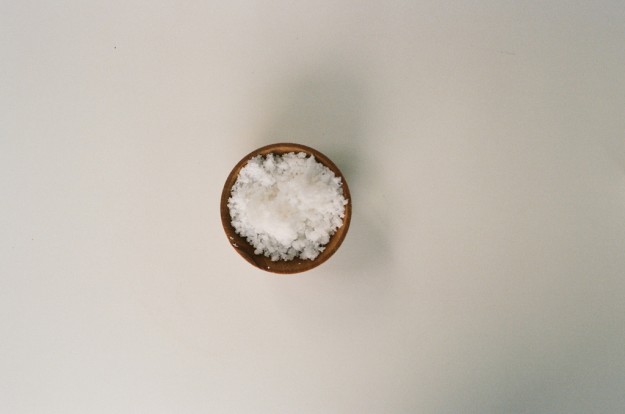
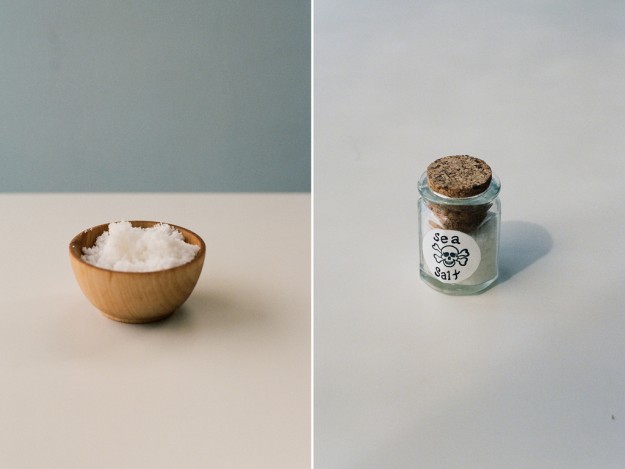
As for the salt itself – it’s wonderful. We had been enjoying it on our food for weeks before I ended up at a potluck with Mark Bitterman, the author of Salted– a book I adore, and also the owner of The Meadow located in Portland, OR and New York. I had Mark give it a try and he ended up taking home the remaining salt I had brought with me that evening. The next day he sent me a message saying he had a chef try it and the chef “flipped out”.
Needless to say my boys are thrilled with their effort. Now we find ourselves busy keeping up with the demand as word has gotten out that they are making salt and people have been wanting to buy. In the meantime we are enjoying this activity that provides plenty of learning opportunities, fun times together, and many trips to the beach. Not to mention, great salt.
I realize it’s not Friday but this post was shot with film. Most often I try and post my recent film shots of Fridays. Here are other Film Fridays to peruse at your leisure.
All images were shot using Kodak Portra 400 using a Canon A1 50mm 1.4.
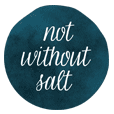


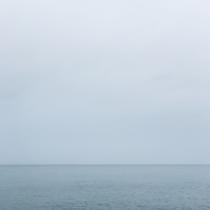




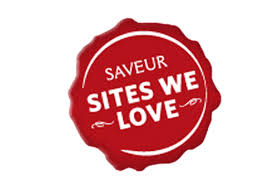
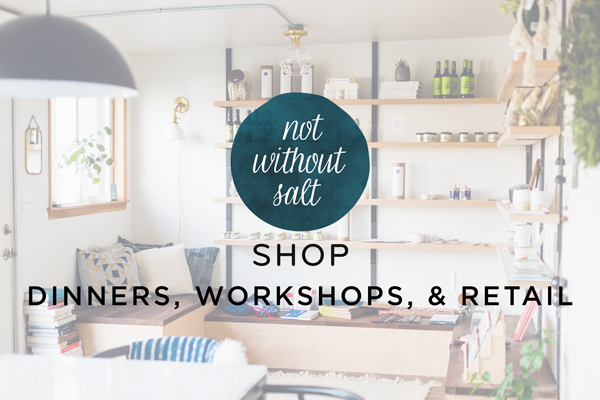

Beautiful post..!!!!! Thank you for sharing
Your blog is my FAVORITE!!!!! I l-o-v-e salt and cannot wait to try this!!
Not that we need a reason to wander around our little local beach but, I can’t wait to go there and try this. I’ll sprinkle some on the butter we’ve been making and it will go perfect with the fresh baked baguettes that I’ve been trying to perfect.
My fave? The cowboy collecting the water! Adorable! Just returned from a weekend at the sea south of Dublin and wishing I read this post before returning sans salt water. Not sure Dublin water would be quite clean enough, despite all the boiling!
This is beyond exciting, Ashley! I can’t wait for you to start selling it (pretty please..?) so I can incorporate your beautiful salt into my cooking!
Thanks for the step by step lovely~ Can’t wait to try it when I get back!
xx
Love this idea, sounds like it would make a great little holiday gift too! Did you just go down to a Puget Sound beach to collect the water or did you go all the way to to the coast?
Wow! As a fellow salt lover, I am in love with this post. Beautiful photography as well!
Oh my gosh this is such a great idea!! I don’t live by the ocean but I do live in Salt Lake. Thinking a trip down to the lake is well in order.
This is so awesome! I wish I lived near a beach so I could harvest my own salt!
Puget Sound salt! What a genius idea! I l♥ve it!
This will be a fun activity the next time we head over to Alki or Whidbey! I love salt too, one of my favorite books is Salt by Mark Kurlansky and I love to check out the varieties at The Meadow. Love the inspiration to make salt from our “home” water!
What! I never knew you could make salt, how awesome! Especially since I have the Puget sound only several blocks from my house. Thanks for sharing!
OK, I just finished reading this, commenting, then saw you on your tv commercial for the first time. ☺
I love this post! Beautiful pictures and what a great idea! I’m thinking I’m going to start bringing salt water from vacations as souvenirs.
What a great idea Ashley! I think the boys and I may have to take our growler with us to the beach next time too!! I love how creative you always are!
Wow! That’s so fun — innovative and interesting but simple at the same time. I wish I could taste that salt!
Awesome! I have been wanting to head down to the beach for a few weeks now specifically for this! I plan on using my 6-gallon pressure canning pot for it. Question: I live in West Seattle – which beach did you go to… I was thinking Lincon Park Beach…do you think it really matters where?
@Jennifer – We have just gone to Carkeek in the past. I’m sure the water from Lincoln park would be great. I wonder if there would be a taste difference? Happy salt-making!!
Very cool! This sounds like it was a lot of fun to make. Thanks!
I never thought of making salt myself. Facinating! I, too, have a variety of salt to choose from when I cook but choosing one you rendered yourself….divine
Genious, apart from creative!
I am excited with this post and of course with the photos.
You always give me a good reason to spent my time here.
Regards,
Nena
Beautiful post!! I too want to make salt now!!
Simply awesome…
Oh wow, just when I think you’ve given me enough awesome ideas to keep me busy, this?? We were just at the beach this past weekend, but now I have a reason to go back asap!! This is just too neat. The babies will get a kick out of it. Thanks so much…and gorgeous shots, as always. 🙂
I love your site – almost as much as I love salt! Beautiful post.
How amazing! I will try this! I live 5 minutes from the beach.
Rad. The salt is obviously outstanding but the fact that you started this whole process with your kids is even better. And it’s teaching them some really amazing skills and lessons and one day it will be a story they tell their friends. Trust me, you’ll be the cool mom in the stories.
My family made salt last fall and winter. It started as a fun experiment with the kids, and then turned into project resulting in holiday gifts for our friends. We live at a marine lab where we have access to filtered sea water, which made it easy. Can’t wait to get our little factory up and running again as the weather grows cooler. Thanks for the great post!
@Suzanne – What a wonderful gift!
My husband calls me the Salt Queen! I love the idea that I could make salt myself. It never occurred to me before as something to even explore. It’s the perfect thing for my “made from scratch” ways. And, a wonderful lesson for my beach lover kids:)
Lovely photos as always!
Wow! That is a time investment. What did your house smell like with all that ocean water boiling away? It looks like the end result was a course salt perfect for topping things. I can only imagine how satisfying it is to know you’re the one who took it from the water!
Ashley, what a unique post! Truly a labor of love but I want to give it a try one day.
just saw your commercial! Very cool!
What a perfect activity for your young boys. And so awesome to have it praised by Mr. Bitterman. (PS: I just made salt too! There must be something in the air. 🙂
This is a lovely post. I’ve yet to make my own salt but hope to do so some day!
This is a great post. Just wish I lived near a beach but, I will bookmark this for the next time we’re at one. Your blog is great and I’m glad I found it.
This sounds so great! I would love to do it myself, but I see some potential problems with it. I hate to be the bearer of bad news, but I’m wondering about the toxins in the ocean water? It seems that the filtration process would get rid of the sediment and the boiling process would kill the bacteria, however any pollution in the water would remain in the salt and possibly be very concentrated. Do you know if there’s anything one can do to purify the water?
Wonderful! Thank you. It reminded me of Pablo Neruda’s poem, “Ode to Salt.” http://www.poemhunter.com/poem/ode-to-salt/ Enjoy. 🙂
I’ve heard of others doing this & wondered about pollution in the water being concentrated in the salt. Thoughts?
I have the same questions as Samantha about any pollution in the water. I wonder about those small filtration systems for backpackers? Just thinking out loud. I live thousands of miles from the nearest salt water, so this isn’t something I’ll have to worry about anytime soon, but I would love to try it someday if it is safe!
This is awesome. I love sea salt, but had never thought of “making” my own.
This is so very cool! I do have a question about the process: Did you turn the heat down super low once most of the water had evaporated to prevent the salt from burning? At what point did you know it was done? Thanks for a great, inspriational post!
This is so timely as I find myself homeschooling my kids for a while starting next Monday and this is a perfect science class to start. We are 10 minutes by bike from False Creek in Vancouver.
This might seem rather naive, but I’m wondering if there is any worry of contamination or pollutants remaining in the salt? We might consider a further destination if there exists any possibility.
Thanks!
Can you infuse the salt with herbs/spices, etc by putting them in cheesecloth and throwing them in as the sea water boils away and then pick out the cheeseclosth at the end?
This is amazing. Thanks for sharing it! I can’t wait to try it. We love to visit Whidbey Island in the Puget Sound (Washington), and I think the how fresh and clean the water is would come through in the sea salt. Thanks again, I’m inspired!
Wow! Salt is one of the leading causes in this nation of hypertension. Salt in moderation once in a great while would not hurt anyone, that is if you are eating completely natural foods, and even then salt is not needed. You can use celery, which has natural salt in it. With all the processed foods and frozen food – snacks, et al. – one should not want to even eat these foods that are rich in fats and sodium. You ought to be ashamed to be contributing to America’s hypertension and that advertiser that endorses you for their product (dish washer) – should be also ashamed of themselves.
Wake up people. Stop being lead around like you are blind and absolutely absent of any sensibilities. Salt kills.
I love the idea around this, but I wonder about the energy expended for 4 hours of simmering for only 1/2 cup of salt. I wonder if there is another way to get it evaporated without my stove being on for so long?
Now THAT is hysterical!! (I’m referring to Liz’s post above regarding hypertension.) FACT: Salt has been used since the beginning of time to enhance and preserve foods. FACT: Salt is a mineral which is absolutely ESSENTIAL to life. No salt = death. In fact, when a person needs IV fluids when they are sick, guess what the primary fluid used is? Yep, SODIUM CHLORIDE. Our bodies are made up of fluids that are primarily saline in nature. FACT: If salt killed people in the numbers that so-called “experts” say they do, the human race would cease to exist. FACT: The crap in the Morton’s box that has been made in a lab and has had iodine added to it is a far different animal than natural sea salt. I’m one of the people that can tell you for certain that my body feels far different when I’ve ingested table salt as opposed to sea salt. The two are not the same. FACT: Hypertension has only become a major problem in the last hundred years or so… interestingly enough, it coincides with the introduction of far greater quantities of processed, irradiated, pesticide-laden, hormone-laden, preservative-laden, antibiotic-laden, boxed foods. When people ate more naturally, it was not nearly the problem that it is today. FACT: The AMA’s guidelines on acceptable blood pressure limits have been lowered again and again and again, coinciding with the introduction of new drugs each time this happens. There is MUCH money to be made on the “hypertension” band wagon. MUCH. Salt does kill… like everything else, when it’s overused and when we eat crappy salt knockoffs. Eat sea salt… enjoy life… be healthy.
http://www.scientificamerican.com/article.cfm?id=its-time-to-end-the-war-on-salt
What an amazing process! Your photos are so incredible..would frame them all!
great story about salt!
but first, what kinds of salt is Fleur de Sel and Maldon, and what are they used for? can you use sea salt on anything?
what a wonderful experiment to have with the kids, and this is coming from one of the biggest 32-year old kid you’ll ever meet ;P
love the pix too, as always
This is one of my favorite posts you’ve ever done, ever 😉 Beautiful story & pictures! I can’t wait to try and make some of my own salt…
Great post!
what fun! I see a college fund in the making. Oh the stories they will tell, and what wonderful Christmas gifts these will make.
Fantastic photographs!
What a great idea! This is going into my file for “fun things to do with future children.”
I am sooo trying this the next time I go to Bandon!!
How totally cool – I’d never have thought of it! I’ll be doing this with the boys next time we’re out in Tofino! Thanks for sharing!
I loved this post… such a great idea! My family has property in the San Juan islands, so last weekend when I was there I got a couple gallons of seawater to make the salt. Then I can give it to them as a place-based gift (sort of… not that water stays in the same place, but it’s a nice idea). I ended up getting about a cup and a half of salt from the gallons, and it made me wonder if the water is saltier closer to the open ocean than in the Puget Sound. Also, where did you get the cute little glass jar with stopper?
@Amber – Wow. How interesting. I wonder if the taste would be much different too. So glad you made salt!! Thanks for the comment.
I might throw a few empty gallon bottles into my car for the next time we end up at the beach. we only live about 7 miles from the gulf of mexico
Wow, so cool and beautiful photos! (Film is magical.)
We live just around the corner from The Meadow here in NYC; it’s one of our favorite shops. In fact, we wrote about it back in May: http://smithratliff.com/2011/05/29/salty-bitter-flowery-and-sweet/
Wow, so cool and beautiful photos! (Film is magical.)
We live right around the corner from The Meadow here in NYC and love, love, love his book. In fact, we wrote about it back in May: http://smithratliff.com/2011/05/29/salty-bitter-flowery-and-sweet/
i’m a new reader (came over from stephmodo) and a recent seattleite — this post is amazing! i have never even thought about making my own salt, so this is fascinating to me. in addition to being practical and delicious, i think making salt from seawater would be such a cool way to commemorate places you’ve been. i grew up in southern california and would love to have some so cal salt to bring with me — though i’m sure it would be radioactive or contaminated 😉 anyway, great post!
Ooooohhh now I want to drive to the ocean just so I can do this:) & I shall do it next time I find myself there:) I just adore your Blog:) ooohh so lovely:)
FILM!
You might want to look up the water pollution in your area, air pollution, and most importantly understand that ocean water and some sea waters are high in methylmercury which can cause serious damage to the central nervous system including your brain.
This site explains it’s best not to consume salt from ocean water because it is likely high in methylmercury http://www.livestrong.com/article/492830-will-mercury-in-sea-salt-harm-health/
“Don’t try to harvest sea salt from public beaches or beaches that are contaminated by chemical runoff or offshore petroleum drilling.”
Read more: How to Harvest Sea Salt | eHow.com http://www.ehow.com/how_2125319_harvest-sea-salt.html#ixzz1n8x9CvmN
This very scary image of water pollution:
http://tommytoy.typepad.com/.a/6a0133f3a4072c970b014e86bae56c970d-550wi
and this of air pollution:
http://drschweitzer.files.wordpress.com/2010/10/nasa_-_new_map_offers_a_global_view_of_health-sapping_air_pollution.jpg
Before everyone runs to their local beach to make their own sea salt, please inform them of the dangers!!!!
Since we are going to this extreme of warning people about what’s bad for them, should we warn everyone about the questionable conditions under which every “company” produced item they purchase for consumption is made?
You do realize that almost all of that “safe” table salt you would rather people eat is a byproduct from the sugar industry. Its one of several byproducts left over after rock salt is introduce into the sugar beet slurry from which the majority of the sugar that has worked its way into almost every item you buy .
A food quality sea salt is actually harvested from underwater sea aquifers deep below the surface, far from a lot of these toxins and issues. You can contact Whole Foods, Trader Joes, or Woolworths and anyone else who is into natural salts. Drink clean water people. Eat salt clean salt people.
How did you keep it from burning and how to you get it completely dry???
Wow! As a fellow salt lover, I am in love with this post. Beautiful photography as well!
WOW That was way to cool. I am not a beach person. I prefer the mountains. But this would sure make me want to go to the beach. Thanks so much for this. I always enjoy your posts.
I would be very careful with how much of this is used. Although non-toxic, there are dissolved minerals that are not good for you that are in that water. For example, calcium sulfate. When seawater evaporates, calcium sulfate (also known as gypsum, which is used in cement and making drywall boards) precipitates into solid before sodium chloride, and is known to cause kidney stones. It isn’t until the seawater has evaporated about 10-15% that sodium chloride begins to crystallize.
I do not usually respond to posts but I will in this instance.
My God, I thought you had been going to chip in along with some decisive
insight at the end there, not leave it with ‘we leave it to you to decide’.
Thanks, so much appreciated!
too bad you didn’t collect the fresh clean water too, instead of just letting the precious liquid evaporate….
If you get the chance travel down to Seaside Oregon. You can learn about Lewis & Clark where they had to stop and make salt for their trip back east. They have a salt cairn to view. Its pretty neat to see.
What about radiation from Fukushima in the Pacific? Also, you burn up a lot of fossil fuel boiling water for 4 hours to make a half cup of salt. Anyway, I live next to the Ionian Sea in Italy and I was thinking of trying this, but letting it dry in the sun.